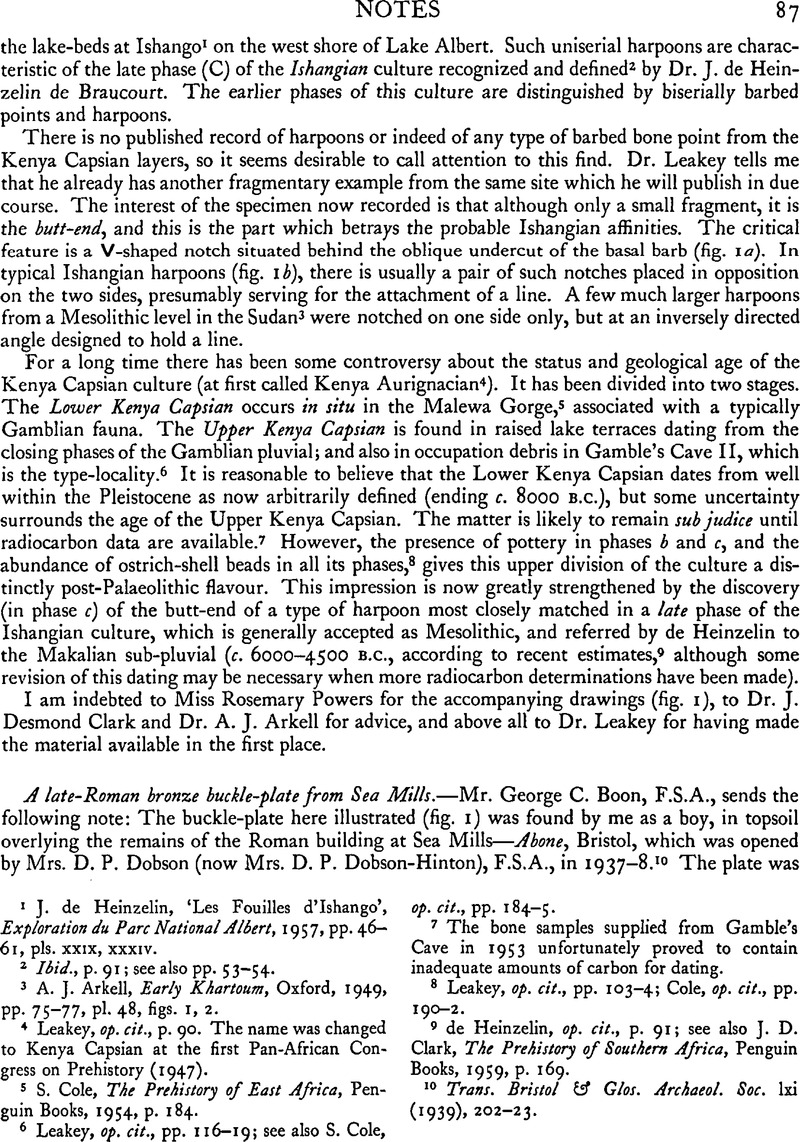No CrossRef data available.
Article contents
A late-Roman bronze buckle-plate from Sea Mills
Published online by Cambridge University Press: 29 November 2011
Abstract

- Type
- Notes
- Information
- Copyright
- Copyright © The Society of Antiquaries of London 1961
References
page 87 note 10 Trans. Bristol & Glos. Archaeol. Soc. lxi (1939), 202–23.
page 88 note 1 Théophile Eck, Les deux cimitières galloromains de Vermand et de St. Quentin (1891), pl. xvi, la; 6 and 9 have a narrower spacing of beading or grooving on the spindle-housing, more like that of the Sea Mills specimen. These finds are also shown in Leeds, E. T., Early Anglo-Saxon Art and Archaeology (1936Google Scholar), pl. v, lower right.
page 88 note 2 Boulanger, C., Le Mobilier funéraire galloromain et franc en Picardie et en Artois (1902–5Google Scholar), pl. VII, 4.
page 88 note 3 T. Eck, op. cit., in note 2, pi. xvi, 2b (found with 1 a).
page 88 note 4 For example, Faussett, B., Inventorium Sepulchrale (1856Google Scholar), pi. ix.
page 88 note 5 For examples from Silchester, Hants, see Medieval Archaeology iii (1959Google Scholar), pls. iii, iv.
page 88 note 6 For example, cf. a Lydney specimen, presumably Valentinian in date, identical with one from Silchester: R. E. M., and Wheeler, T. V., Excav. in Lydney Park, Glos. (Res. Rept. Soc. Antiq. Lond., ix, 1932Google Scholar), pi. XXVIII, 132.
page 89 note 1 From personal inspection.
page 89 note 2 Military occupation ends c. 383–8, apparently; see Nash-Williams, V. E., The Roman Frontier Wales (1954), 143Google Scholar.
page 89 note 3 Including several hoards. Bulletin of the Board of Celtic Studies, ii (1925), 92–97Google Scholar.


